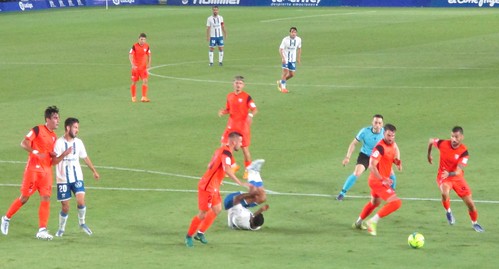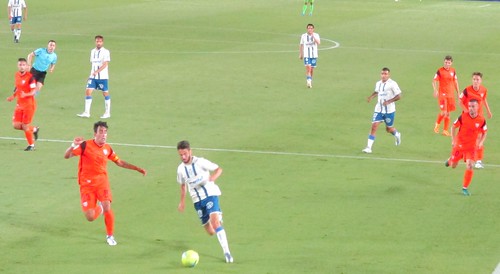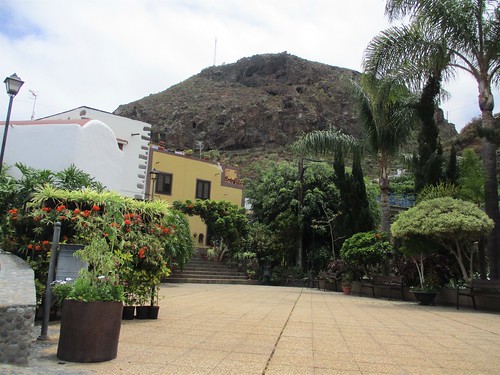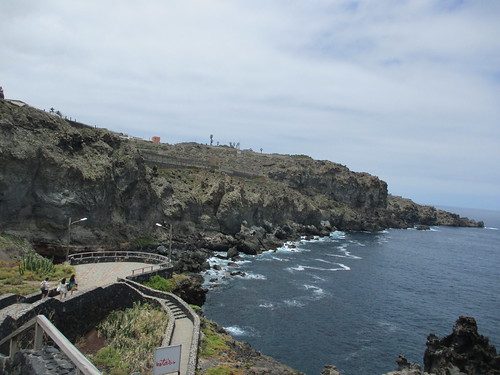
Stocky, compact but packing a punch, the Spanish patrol ship P42 Rayo chose International Armed Forces Day to make the short crossing from its Las Palmas, Gran Canaria base. Loaded with practical hardware, the 94 metre long multi purpose ship may have a crew of just 46 but has carried out protection and escort duties in the Atlantic and off flashpoints like Somalia.

It was all welcomes and smiles in Santa Cruz as the captain welcomed the curious up the gangplank to look around. A well stowed helicopter had its own landing pad that minimised down draft and dispersed surplus water. The big Malara gun and the two smaller machine guns added to the firepower if needed. As we toured inside the belly of the beast, there were many small homely touches like the small shrine to the Virgen and a kitchen that stoked the inner fires.


The ship was built in San Fernando in May 2010, the fifth vessel to bear the name. The first Rayo P42 saw action at the Battle of Trafalgar in 1805, when Horacio Nelson sustained fatal injuries. That was less than 10 years after the famous British admiral had lost his arm in a failed attempt to take Tenerife.


It´s not just full on action these days, the captain reminded us the ships importance in a peace keeping or environmental monitoring missions. They were certainly making friends on the visit, especially among the awe struck younger temporary recruits. There was even a table of merchandise with replica caps and t shirts, but sadly no flowing wine.

Fear of relegation trumped the hunger for promotion as Malaga out fought and out played CD Tenerife for a 0-2 win in Santa Cruz. For 24 hours the defeat hung like a black cloud over our sunny island, but points dropped by Real Oviedo the next evening confirmed a promotion play off place for Tenerife.

It took just eight minutes for the alarm bells to start clanging when a raid down Tenerife´s left ended with a dipping cross that Carlos Ruiz failed to cut out, leaving a free Vadillo header past a hesitant Dani Hernandez covering for suspended Soriano. Malaga were giving two 21 year old fringe players a chance, Olmo running from deep was constantly testing Mellot but the French home defender did well to limit his influence. Mario Gonzalez had the best home chance of the first half but was held back by a Malaga defender when aiming his shot.

Tenerife looked half paced with Alex Corredera very quiet in midfield, Elady and Gallego were struggling to muster a decent shot between them. Surely a half time breather would restore the pecking order as suggested by league placings, but it just got worse. Three minutes after the restart, Dani blocked a shot with his knees and it rebounded out to Febas to double the agony.

Molledo was aggressive as always on the left but he was a little too wild to produce a cool, clean strike. Coach Ramis gambled with a double change just before the hour. Shaq Moore replaced Mellot at right back and forced a finger tip save after a dash down the wing and a pin point cross. Nahuel, rarely making even a spot on the bench, also came on but despite his powerful runs inside off the left, he had no end product.

Malaga were feisty, argumentative, and rime wasting, everything you would expect from a side fighting to avoid the drop. Tenerife were a shadow of their away game majesty and couldn´t claw their way back. Injuries and suspensions, plus nerves are bound to be playing a part, but they can now experiment a little in their two remaining regular league games before the two legged semi and hopefully final. Once again a big crowd, 14,672, went away dissapointed but the dream is still alive.

Hemmed in by the sacred mountain Fortaleza and a 9.000 year old black lava trail down to the sea, San Juan de la Rambla has had to dig deep to express itself. The result is a defiant and colourful municipality in the north of Tenerife.

The TF 5 road linking Icod de Los Vinos to Puerto de la Cruz delivered me from my TITSA bus, close ro one of several old concrete tunnels perched above the coast. Looking up it was a little dark and fornoding, especially taking the mini tunnel under the busy mainroad, but within minutes I was marvelling at the beauty in the old village of San Juan de la Rambla. The entire municipality boasts just under 5,000 inhabitants.


 The bright colours of the buildings and the well maintained flower borders showed a sense of pride at work, and plenty of tradition. A calvaro made a sturdy home for the religious crosses and just beyond, a small neat plaza led to some age weary old houses. Despite their peeling paint, they had a certain nobility about them. and a few scattered clothes washing troughs were another link to the past.
The bright colours of the buildings and the well maintained flower borders showed a sense of pride at work, and plenty of tradition. A calvaro made a sturdy home for the religious crosses and just beyond, a small neat plaza led to some age weary old houses. Despite their peeling paint, they had a certain nobility about them. and a few scattered clothes washing troughs were another link to the past.




Local rock dating back 2 million years had been quarried on a small scale in the past and the work had taken its toll on many younger workers. Ornaments and even parts of the nearby cemetary were adorned with locally crafted work, some of the extracted ore was even transported to South America. A monument paid tribute to the hard and dangerous quarry work.



The village hasn´t sat still since its industrial past. A newer, low level housing development sloped down to the Charco La Laja rock pool via a reinforced series of paths and ample warnings of times and rides ro avoid. On this sunny afternoon, the sparkling water had attracted a small crowd of swimmers and anglers. High up above the popular dipping point, a small spring trickled water down to the sea, and views both ways along the coast showed a series of rugged coves.


Heading back up, I swerved along and past several welcoming bars and cafes before finding the church and plaza of San Juan (John the Baptist) with its very detailed clock face. Striding up to my original access point, I couldn´t help imagine how horrific the record rainfall floods of 1826 must have been as water swept down off the mountain. Work was underway to widen the entry point to the village and the closed Tourist Information office had plenty of good information and maps on disply outside. A couple of walks caught my eyes and will draw me back to check out a route from up the mountain and down through the Barranco Ruiz.















 The bright colours of the buildings and the well maintained flower borders showed a sense of pride at work, and plenty of tradition. A calvaro made a sturdy home for the religious crosses and just beyond, a small neat plaza led to some age weary old houses. Despite their peeling paint, they had a certain nobility about them. and a few scattered clothes washing troughs were another link to the past.
The bright colours of the buildings and the well maintained flower borders showed a sense of pride at work, and plenty of tradition. A calvaro made a sturdy home for the religious crosses and just beyond, a small neat plaza led to some age weary old houses. Despite their peeling paint, they had a certain nobility about them. and a few scattered clothes washing troughs were another link to the past.







